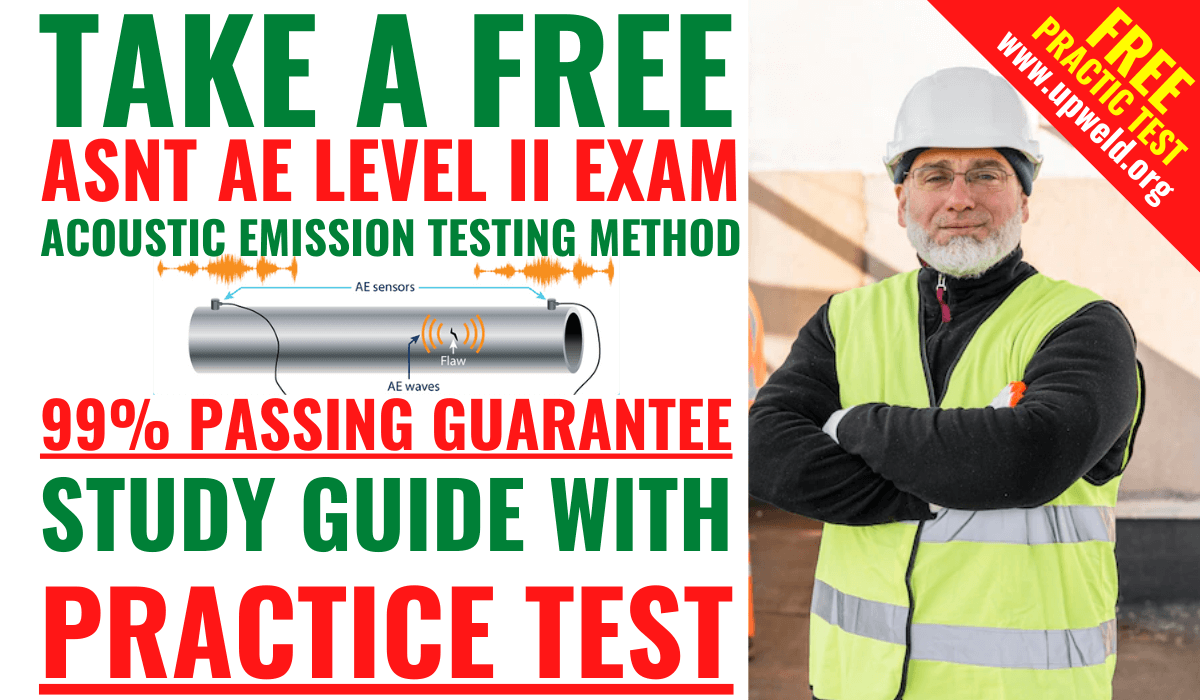Here you can take free ASNT NDT AE Level 2 Exam Practice Test with Latest Acoustic Emission Testing Method Questions and Answers
Are You Looking for a Free ASNT NDT AE Level 2 Exam Practice Test?

If your answer is yes then you are at the right website. Here You Can Take a Free Online ASNT NDT AE Level 2 Exam Practice Test and Improve Your ASNT AE Level II – Acoustic Emission Testing Method Exam Score. Here You Can Learn everything you need to know about ASNT AE Level II quickly and easily.
In This Practice test, We are covering the Latest ASNT AE Level 2 – Acoustic Emission Testing Method Question and Answers, After completing the last Question you will see the ASNT AE Level II Practice Test Answer Key, No cheating now! Once you complete the test and check your answers please leave us your score and any comments in the comments section below
We will help you to pass the ASNT AE Level 2 Exam on the first attempt —99% Guaranteed. Our expert-written ASNT AE Level II – Acoustic Emission Testing Method Examination practice material covers the actual exam topics with fully explained answers.
Take unlimited free ASNT AE Level 2 Quiz Course tests of any length. We have free Latest questions updated every week and you can study our material along with any other study materials.
In this quiz course, we are covering all the topics listed below:
- Roles and Safety/Health of Technicians Involved in Non-destructive Testing
- Principles of the Acoustic Emission (AE) Method and Signal Processing
- AE Sensor (AE Transducer)
- AE Measurement System
- Practical AE Testing, Data Recording, and Analysis
- Field Application Examples of AE Testing
If You Want to Buy the Latest ASNT AE Level III Exam Self Study Material, Please Feel Free to contact us.
Buy ASNT AE LEVEL 3 Exam Learning Package Study Material
FOR EVERY 10 QUESTIONS 1 QUESTION COMES INTO THE EXAM
WE HAVE LATEST ASNT AE Level III – Acoustic Emission Testing Method QUESTION BANK
Total 1000+ nos QUESTION BANK FROM THEORY TO PRACTICAL TO NUMERICALS.
Cost: $25.00
Email Us To Buy: upweld.org@gmail.com
Click Here To Contact us On Whatsapp https://wa.link/4dn6ee
Ideally, the only material needed for passing the examination. Free guidelines during learning.
We give you a lot of additional study material Free of cost with this question bank.
Get BOTH Formats Instantly:
Online—Instant scoring, review & reporting.
Printable—Instant download.
If you want to get ASNT AE Level II – Acoustic Emission Testing Method Training and Certification, Please feel free to contact us.